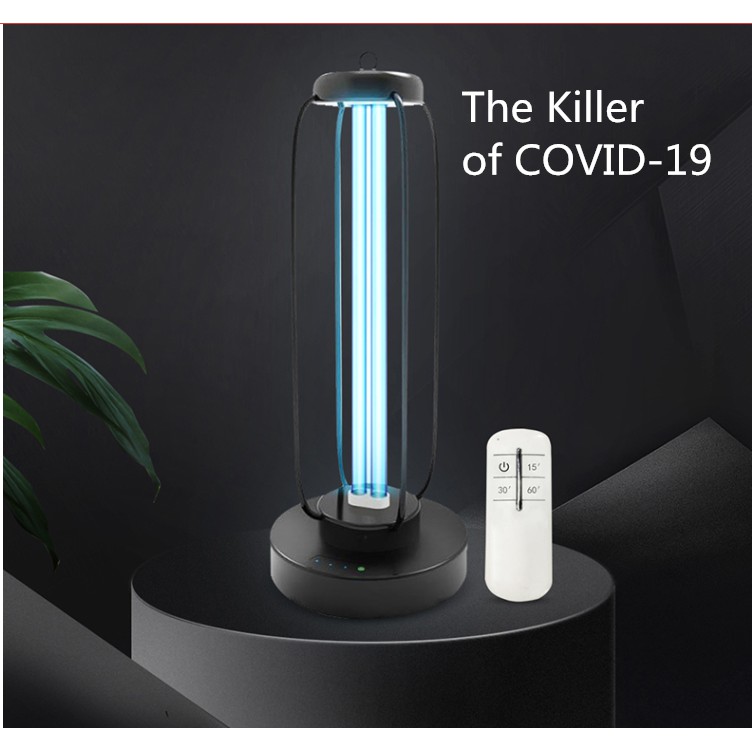As more and more businesses reopen after months of closure due to the COVID-19 pandemic, containment of the virus has become more critical. Whether in response to state and local requirements, or steps businesses are taking on their own, enhanced measures like ultraviolet light (“UV”) sterilization take the offensive on coronavirus to the next level. This technology has been used in hospitals and larger medical practices for years. Now, smaller medical practices and dental offices are looking to adopt this technology. Here, we take a closer look at the efficacy of UVC light towers to protect dental healthcare professionals (”DHCPs”) and patients from viruses, bacteria, and other pathogens, including coronaviruses.
UVC light sterilization (i.e., UV light at shorter wavelengths) is a viable solution for dental practices where the large number of oral microbes and heightened risk of exposure from aerosolization of blood and saliva during dental procedures exist. In fact, a recent COVID-19 Department of Labor Occupational Risk Study revealed that dentists, dental hygienists, and dental assistants have infection risk scores in the top 10% of well-known professions (on a scale of 0 – 100, 92.1, 99.7, and 92.5 respectively).
From an earlier article in this series, we noted that UVC light from germicidal bulbs emit very short ultraviolet wavelengths from 100 to 280 nanometers that affects the DNA of pathogens. UVC light damages the nucleic acid in microorganisms so they cannot “unzip” for replication. Without the ability to reproduce, the pathogens will die from ultraviolet germicidal irradiation (“UVGI”). The kill rate varies by microorganism and UVC dosage from the lamp. Dosage is a combination of exposure time and intensity (microwatts per square centimeter). UVC light a wavelength of 254 nanometers (“nm”) is effective against most organic molecules, including coronavirus because it is a “fragile” microorganism. According to Dr. Richard Martinello, Associate Professor at Yale School of Medicine and Medical Director of the Department of Infection Prevention at Yale New Haven Hospital, what makes the virus fragile is its coating of lipids (i.e., fat) that is disrupted easily.
With a basic understanding of how UVC light can make dental facilities safer for patients and DHCPs, we compare some of the best UVC light towers for dental practices on the market, such as the UV Cleaning Systems, Inc. Safe Zone 850M9, the American Ultraviolet MRS33-8 and MRS45-12 mobile UV units, the Larson UC360-48-8L-UVC-V3-AT-KT-50C, the Skytron 1140 Sentry, and the Diversey MoonBeam 3. The following chart provides a quick comparison of these solutions by price (in USD), total wattage, and cost per watt.
UVC Light Tower Solution | Price | Wattage | Cost Per Watt (Price/Wattage) |
UV Cleaning Systems Safe Zone 850M9 | $9,995 | 855 | $11.69 |
American Ultraviolet MRS33-8 | $9,995 | 400 | $24.98 |
Larson UC360-48-8L-UVC-V3-AT-KT-50C | $13,560 | 576 | $23.54 |
American Ultraviolet MRS45-12 | $15,995 | 660 | $24.23 |
Skytron 1140 Sentry | $32,995 | 1140 | $28.94 |
Diversey MoonBeam 3 | $32,746 | 570 | $57.45 |
There is a wide variation in price as well at wattage among these solutions. That said, what are some key considerations in selecting the best UVC light tower for a dental office?
Generally, the higher the wattage of UVC light emitted, the higher the dosage, and the closer to a surface that needs cleaned the UVC light source is, the lower the exposure time to eradicate microorganisms. Further, these products, like any others emitting UVC light for cleaning, are not for use when patients are present in the space, and operators will need personal protective equipment during the process. And since UVGI is non-penetrating, operators must spray the room with disinfectant first, wait 10 minutes or so, and wipe down the surfaces prior to UVC cleaning.
Another consideration is versatility and size. All of these solutions are mobile, meaning that casters or wheel assemblies allow for easy transport from room to room. The height (generally less than 4’ tall), width (about 20” wide), and depth (about 20” deep) make them workable for most spaces.
With all of this mind, the best solution for dental facilities may be the UV Cleaning Systems Safe Zone 850M9. This model offers a higher wattage UVC light emission than all but the Skytron 1140 Sentry at the lowest overall price and cost per wattage. It is also double the wattage of the American Ultraviolet MRS-33-for the same price and 1 ½ times the wattage of the pricey Diversey model). Though the Skytron option has the highest wattage, one must ask whether faster cleaning time justifies the much higher price tag. If cleaning cycle times are important, the purchase of two or three 850M9 units will meet the need better.
Of course, UVC light is not a “stand-alone” solution. It should be used in concert with other precautions the American Dental Association recommends to mitigate routes of infection. However, UVC light towers can improve the cleanliness of dental offices significantly, protecting the patient as well as the practitioner, a consideration that surely will be ongoing in the post-COVID world.

